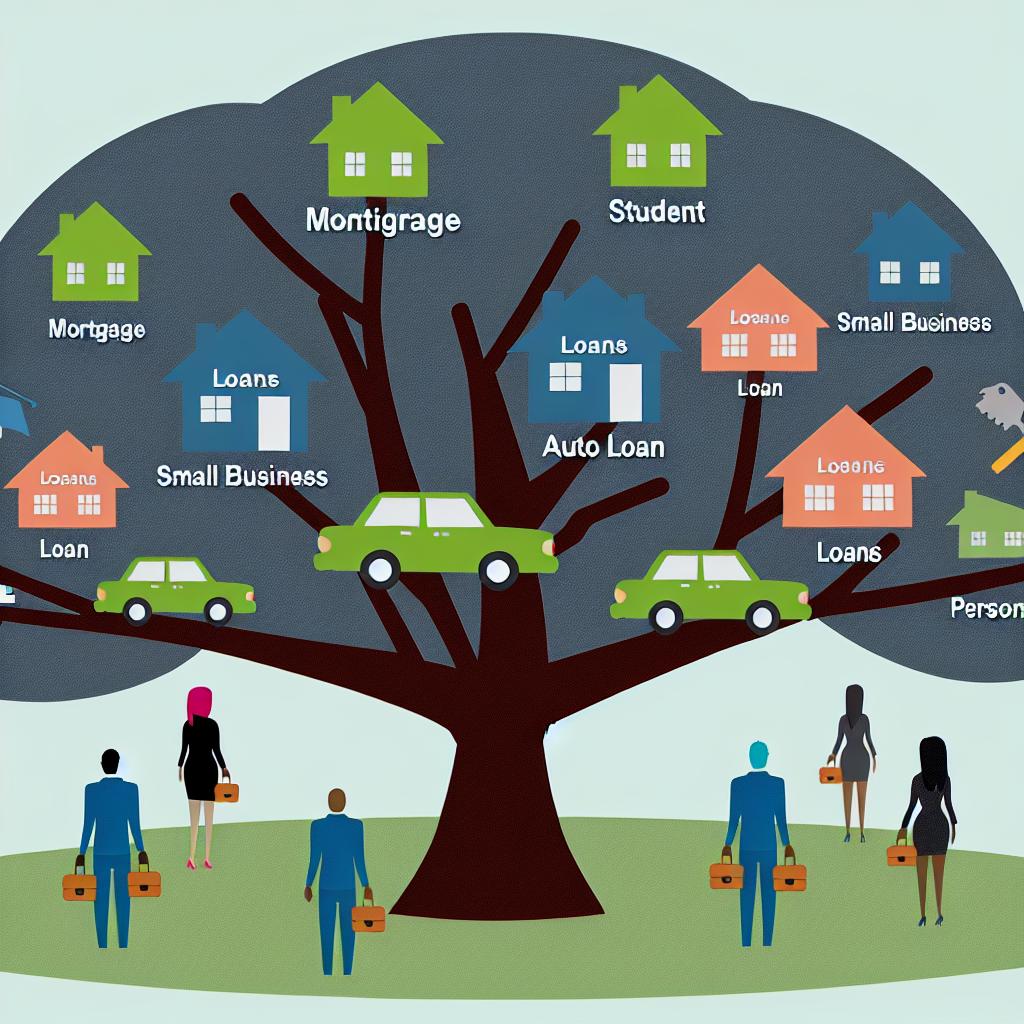Introduction
In the United States, the financial market presents a wide array of loan products that cater to myriad borrowing requirements. Whether an individual aims to buy a home, pursue higher education, establish a business, or handle personal finances, understanding the various types of loans available is crucial to making educated choices. This expanded discussion will delve into these loan categories, providing detailed insights into each.
Home Loans
One of the most substantial and prevalent loans in the U.S. is the home loan, commonly known as a mortgage. These financial products are explicitly crafted to assist individuals in purchasing or refinancing a home. Home loans are typically classified into several categories.
Conventional Loans
Conventional loans refer to mortgage products that are not insured or backed by the federal government. Key characteristics of conventional loans include a typically higher credit score requirement and a larger down payment compared to their government-backed counterparts. These loans are often sought by individuals who have robust financial standing and can afford the initial financial outlay and meet rigorous credit assessments.
Government-Backed Loans
Such loans encompass FHA loans, VA loans, and USDA loans, each designed to serve different segments of the population:
FHA Loans
FHA Loans are offered by the Federal Housing Administration and are especially popular among first-time homebuyers. The primary attraction of FHA loans lies in their lower down payment prerequisites, which enable more people to enter the housing market without having to amass a substantial amount of savings upfront.
VA Loans
VA Loans are tailored for veterans and active-duty service members. One significant benefit of VA loans is the option of a zero down payment, enhancing affordability for individuals who have served in the military and allowing them to become homeowners with fewer barriers.
USDA Loans
USDA Loans are directed towards rural homebuyers. A notable feature of these loans is that they offer the possibility of no down payment, incentivizing buyers to invest in rural areas. This helps spur development in less densely populated regions by making homeownership more accessible.
Student Loans
Student loans are structured to help cover the expenses associated with higher education. These loans can be broadly divided into federal and private student loans.
Federal Student Loans
Federal student loans are provided by the government and are often more favorable in terms than private loans. The primary federal student loans include Direct Subsidized Loans, Direct Unsubsidized Loans, and PLUS Loans. Individuals looking to delve deeper into these options can view resources provided by the U.S. Department of Education’s Federal Student Aid office, which offers comprehensive details and assistance.
Private Student Loans
In contrast, private student loans are offered by banks, credit unions, and other financial entities. They typically feature variable interest rates and may include repayment terms that diverge from those of federal loans. Borrowers seeking private loans often require a cosigner or a solid credit history to obtain favorable terms.
Personal Loans
Personal loans are versatile financial products that can be used to address a variety of personal expenses, including debt consolidation and unexpected major purchases. Most personal loans are unsecured, meaning they do not require the borrower to provide collateral. However, there are secured personal loan options available, where an asset such as a car or savings account is used as collateral to secure more favorable loan terms or interest rates.
Auto Loans
Auto loans are dedicated financial products used expressly for the purchase of vehicles. These loans are secured by the vehicle itself, simultaneously providing collateral to the lender and a pathway to ownership for the borrower. Borrowers can secure auto loans through banks, credit unions, or directly from dealerships. The terms of an auto loan, including interest rates and repayment schedules, can vary widely depending on the lender and the borrower’s creditworthiness.
Business Loans
Business loans offer essential capital to entrepreneurs and business owners for various needs including business expansion, equipment purchases, and operational costs. There are multiple types of business loans, among them term loans, SBA loans, lines of credit, and equipment loans. The Small Business Administration (SBA) provides diverse loan programs specifically tailored to assist small businesses in obtaining the funding they require to grow or sustain operations.
Types of Business Loans
Term Loans are typically structured with fixed repayment terms and interest rates, while lines of credit provide flexible access to funds as needed up to a certain limit. Equipment loans are specifically used for purchasing new equipment, offering the equipment itself as collateral.
Conclusion
In conclusion, with the extensive array of loan options accessible in the United States, conducting thorough research and comparing different products is paramount to identifying the best match for one’s financial circumstances. This process involves a comprehensive understanding of the terms, interest rates, and repayment conditions associated with each loan type. Whenever possible, it’s advisable to consult with financial advisors or loan specialists who can offer tailored guidance and insights. Such due diligence ensures that borrowers can embark on their financial endeavors with confidence and optimism.
